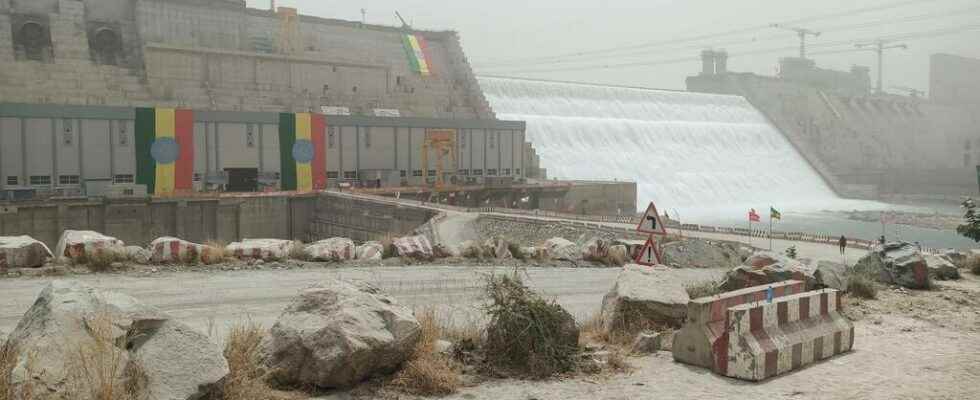The announcement was made by Prime Minister Abiy Ahmed on Friday in a televised speech. This mega-dam is the largest in Africa. Eventually it will be able to reach a power of 5000 megawatts.
The reservoir now contains 22 billion m3 of water, or a third of its total volume. The second turbine, out of the 13 planned, has been started. The project manager assured that the civil works are 95% complete. At full capacity, the dam, inaugurated last Februaryshould make it possible to double Ethiopia’s electricity production.
This project, launched more than a decade ago, encountered two major difficulties. The first was financial. Ethiopia claims to have received no external support to build this mega-project valued at four billion dollars. The state notably taxed its civil servants and appealed to the generosity of its citizens and its diaspora.
The second is political. Egypt and Sudan, countries located downstream of the dam, have constantly opposed this project. They are worried about their water supply. Several rounds of negotiations have taken place without results. Sudan and Egypt have repeatedly asked Ethiopia to stop filling pending a tripartite agreement.
■ A dam for the Ethiopian economy above all
According to the World Bank, about one in two Ethiopians has access to electricity. For this poor country in the Horn of Africa, this mega-dam brings hope on the social and economic level. Marc Lavergne, emeritus research director at the CNRS at the University of Tours, discusses the successes and weaknesses of this project in the new announcement from the Ethiopian authorities.
What remains to be done are the networks to transport electricity to other countries, Kenya in particular, which is very demanding of this electricity which will bring in foreign currency for Ethiopia. […] What has really focused attention since the entry into activity of the dam is the war in Tigray, which has caused the construction of the dam to have passed into the shadows while it was the beacon of the Ethiopia, which could show the world that it was a country emerging from underdevelopment on its own […] Supplying villages with high voltage lines of tens or hundreds of kilometers is very expensive and brings little in. The idea of the Ethiopian leaders is to attract foreign investment, and in particular Chinese, who need cheap labor and cheap electricity also to make textile factories, to re-export products to Europe. The priority, for Ethiopian leaders as well as for investors, is that this electricity be used to run factories before actually supplying rural areas…
Marc Lavergne, emeritus research director at the CNRS at the University of Tours
